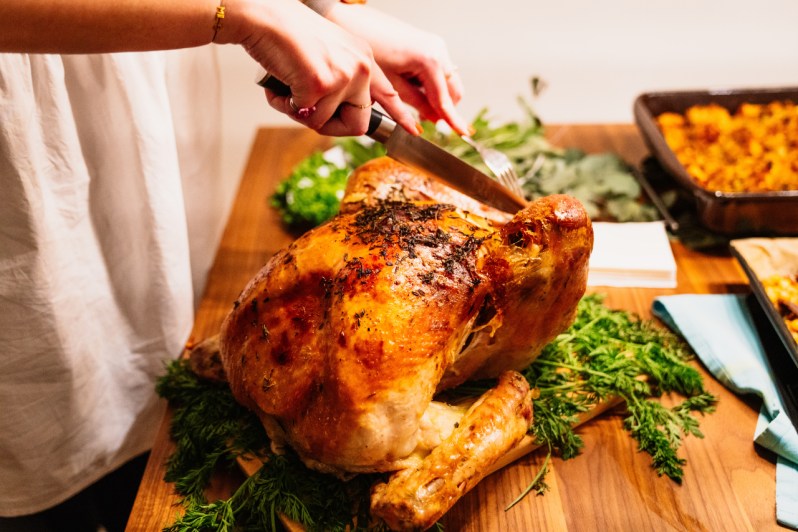
Most people who have heard of tryptophan associate it with the postprandial sleepiness that ensues after your big Thanksgiving meal or another big turkey dinner. Tryptophan is an essential amino acid, which means that it must be consumed in the diet because the body cannot manufacture it on its own. Tryptophan is used by the body to synthesize various proteins, as well as niacin (a B vitamin), and a molecule known as 5-hydroxytryptophan or 5-HTP. Because 5-HTP is a precursor for the neurotransmitter serotonin and the hormone melatonin, inadequate intake of tryptophan can cause depression, low mood, sleep disturbances, and behavioral changes.
On the other hand, by consuming foods high in tryptophan, you can help ensure your body has adequate levels of this amino acid to support ample serotonin and melatonin production. Essentially tryptophan foods will help you sleep at night.
Although turkey is one of the best sources of dietary tryptophan, there are plenty of other foods with tryptophan as well. Because tryptophan is an amino acid, most tryptophan-rich foods are proteins. However, if you’re a vegetarian or not a fan of poultry or meat, there are a few plant-based options as well.
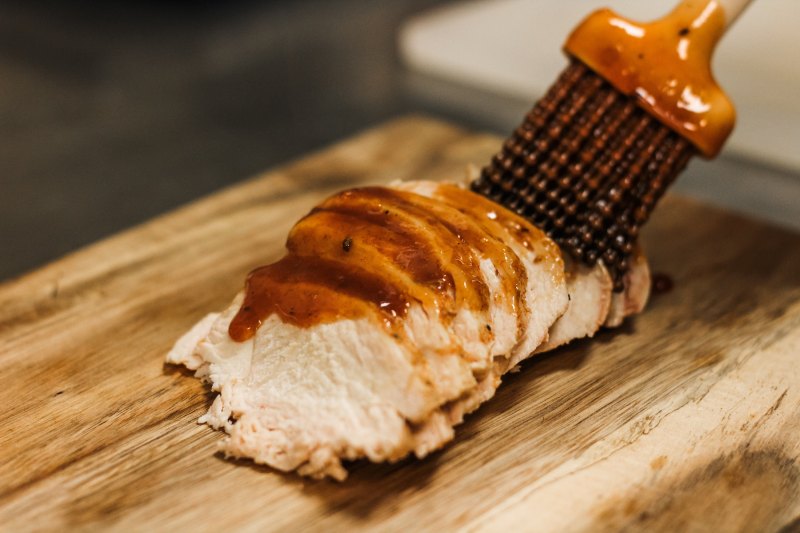
Poultry
Turkey doesn’t get its rap for having a lot of tryptophan for no reason — it certainly does. For example, for a 70-kg (154-pound) man, a 6-ounce serving of ground turkey, containing 612 mg of tryptophan, will be more than double what he needs. The recommended daily intake (RDI) of tryptophan is 4 mg per kilogram of body weight, so each 6-ounce serving of ground turkey provides 219% of the RDI.
The same-sized portion of roast turkey breast provides 488 mg or 174% of the RDI. While these numbers are certainly impressive and hefty enough to substantiate the claims that turkey contains a lot of tryptophan, turkey actually doesn’t lead the race in foods highest in tryptophan.
The crown goes to chicken breast, as a 6-ounce portion packs a walloping 687 mg, or 245% of the RDI for a 70-kg person. Recommended Daily Intake (RDI). Other poultry sources high in tryptophan include roast chicken (507 mg or 181% RDI) per cup and roast duck (458 mg or 164% RDI) per cup.
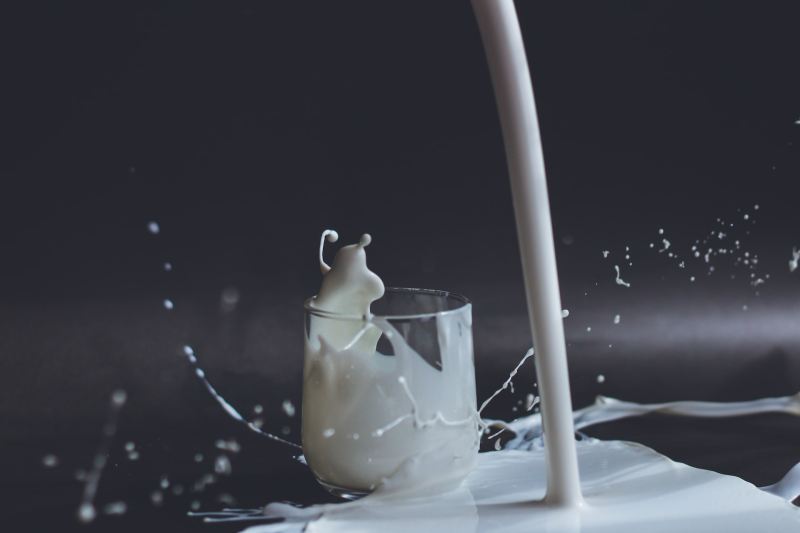
Milk and other dairy products
Warm milk has long been used as a relaxing bedtime beverage, as many people find it acts as a mild sedative and promotes better sleep. This effect may be due to its tryptophan content, as tryptophan increases serotonin and melatonin, which are involved in the sleep cycle. Each 8-ounce glass of milk provides 106 mg of tryptophan (38% RDI). Other dairy foods are also good sources of tryptophan. For example, each half cup of cottage cheese contains 332 mg (118% RDI), while a one-ounce serving of cheddar or hard mozzarella provides 155 mg.
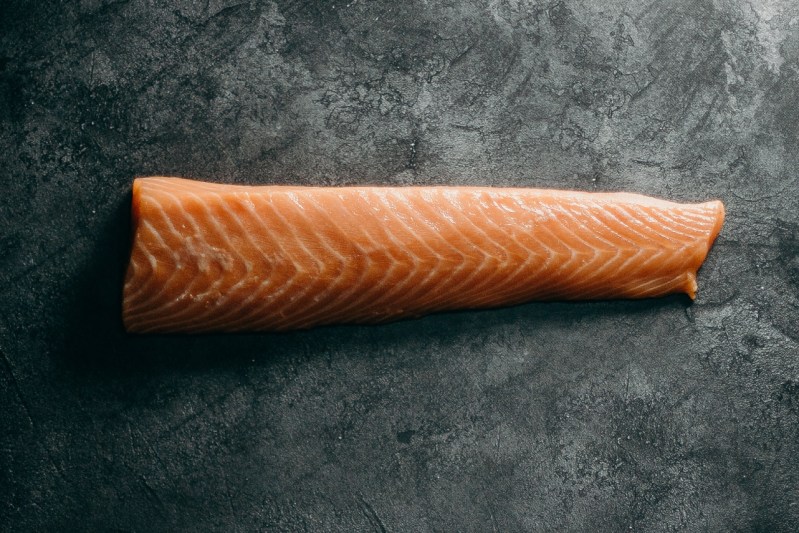
Salmon and other kinds of fish
Salmon earns a spot on many lists of the healthiest foods due to the high concentration of anti-inflammatory omega-3 fatty acids and key vitamins. As a great source of protein, salmon also contains a lot of tryptophan. A 6-ounce fillet contains a whopping 570 mg (203% of the RDI). If you’re far from the first in line to order the salmon dish at your favorite restaurant, the good news is that many kinds of fish provide nearly as much tryptophan.
In fact, a tuna fillet contains the same amount of tryptophan as salmon, and snapper, cod, tilapia, and mahi mahi aren’t far behind, with 500 mg, 461 mg, 451 mg, and 423 mg per 6-ounce fillet, respectively. Seafood such as lobster, crab, and oysters, also provide a lot of tryptophan.
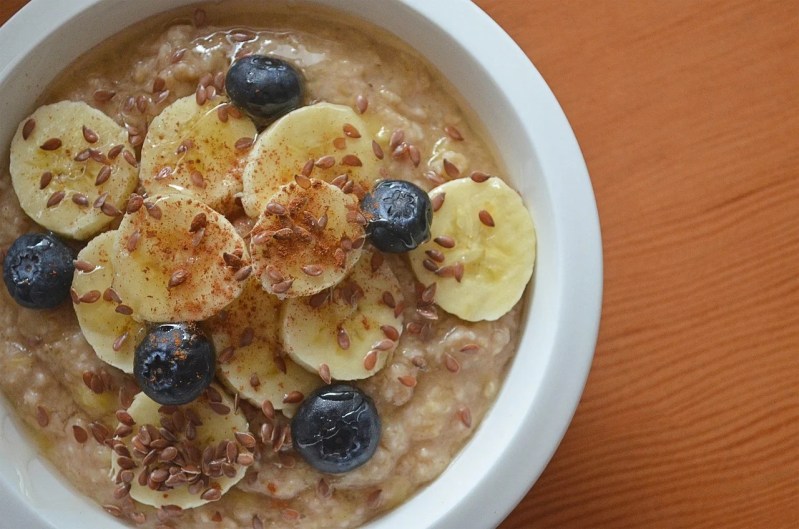
Oatmeal
Whole grains are considered a source of complex carbohydrates rather than protein, so not many grains are particularly high in tryptophan. However, if you’ve been looking for yet another good reason to jump on the overnight oats bandwagon, here’s one: Each cup of oatmeal contains an impressive 94 mg of tryptophan, which is equal to 33% of the RDI for a 70-kg person.
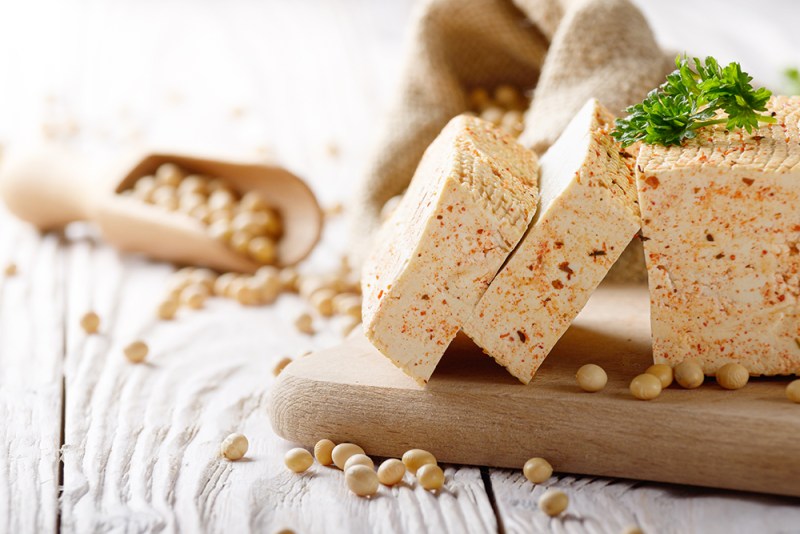
Tofu and edamame
Vegans and vegetarians need not worry that the only good sources of tryptophan are animal products. Soy products contain plenty of this essential amino acid. For example, when you cook tofu at home, one cup of firm tofu packs an impressive 592 mg (212% RDI), and an 8-ounce glass of soy milk has 92 mg.
A cup of boiled edamame provides 416 mg (197% RDI). Edamame can be added to salads, stir-fries, or eaten plain as a protein-rich snack.
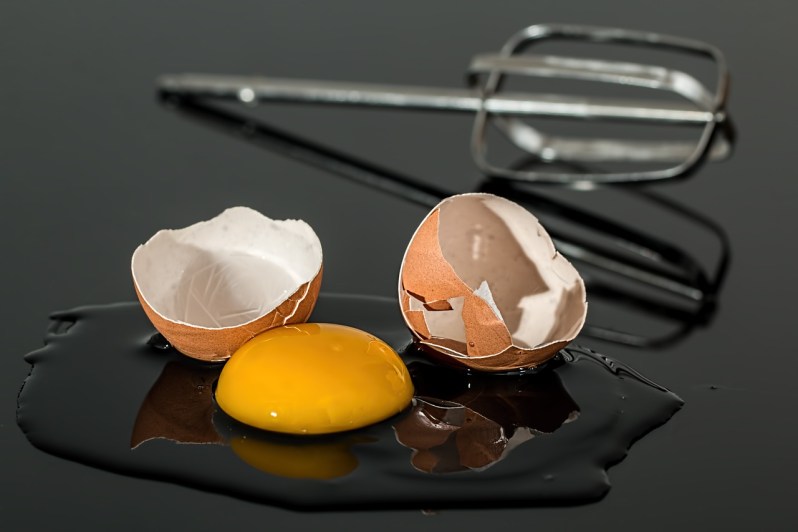
Eggs
Kickstarting your day with a breakfast of eggs gives you a quick boost of tryptophan, too. One large egg contains 77 mg (27% RDI) of tryptophan, while each egg white has 41 mg. Therefore, if you pile your plate with a cup of scrambled whole eggs, you’ll get 306 mg (109% RDI).
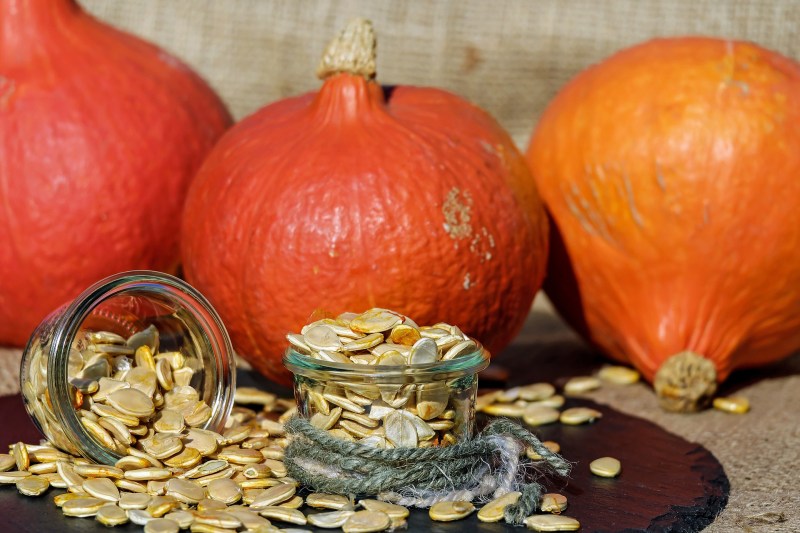
Squash and pumpkin seeds
Seeds are often touted as superfoods, boasting impressive nutrition profiles with omega-fatty acids, fat-soluble vitamins, key minerals, and plenty of fiber. Many seeds also contain plenty of tryptophan. For example, a one-ounce serving of squash or pumpkin seeds provides 164 mg (58% RDI). Chia seeds and flaxseeds are also good sources of tryptophan. Try sprinkling flaxseeds on salads, yogurt, or oatmeal, or dry roasting squash and pumpkin seeds and eating them as an afternoon snack.
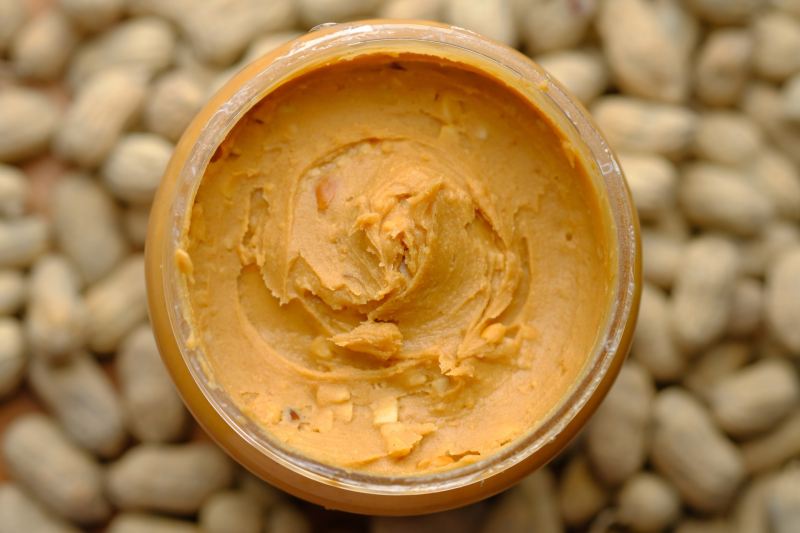
Peanut butter
Peanut butter lovers rejoice. This popular nut butter contains 74 mg of tryptophan per two-tablespoon serving. Try adding a tablespoon of your favorite peanut butter brand to your smoothie or dipping apple slices or carrot sticks into peanut butter for a satiating snack.
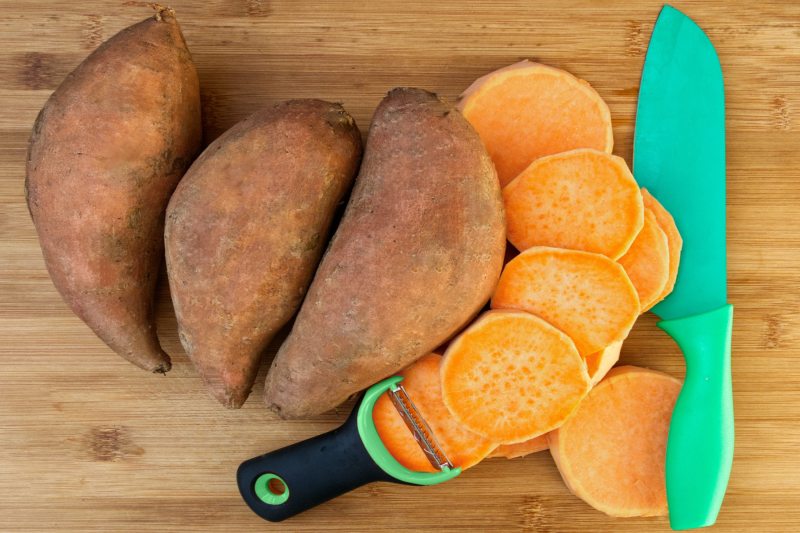
Sweet potatoes
Though there are fewer really rich vegan sources of tryptophan, sweet potatoes contain a surprisingly hefty dose. Each cup of these mashed delicious tubers provides 92 mg (33% RDI) of tryptophan. Sweet potatoes are also excellent sources of vitamins A and B5, as well as copper and manganese.
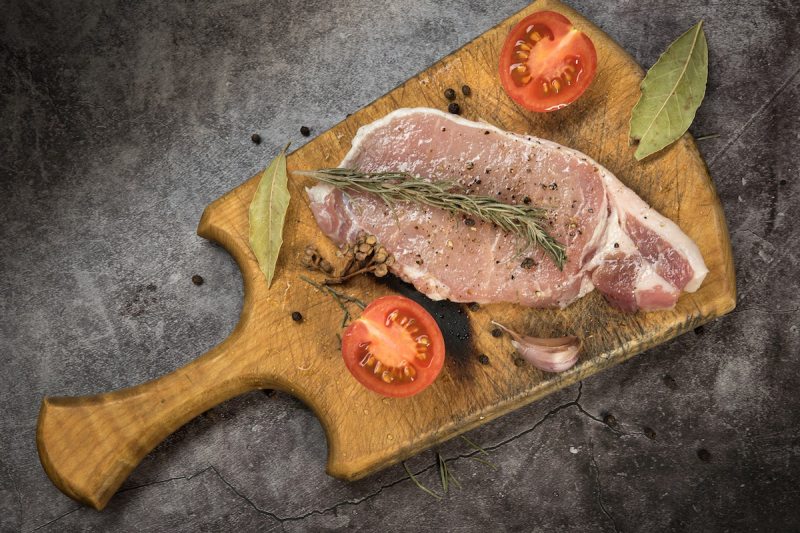
Lean pork chops
Pork is one of the best sources of tryptophan, with each 6-ounce lean pork chop providing an impressive 627 mg (224% RDI). If you’re more of a beef lover, rest assured: A 6-ounce skirt steak actually slightly edges out lean pork, containing 636 mg of tryptophan.
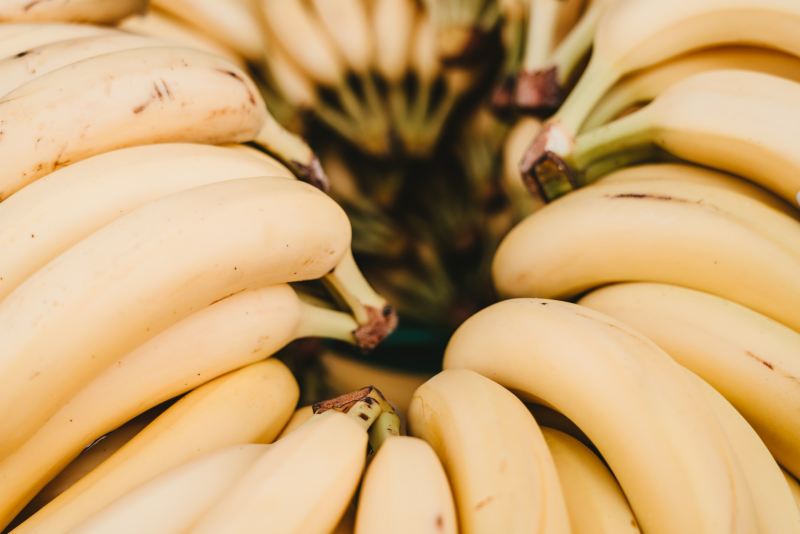
What fruits are high in tryptophan?
Fruit may not be a top source of tryptophan, but you can certainly get a good amount if you know what to seek out in the produce section. Look for fruits like pineapple, plantains, bananas, and kiwi. Other options include plums and tomatoes (yes, a tomato is a fruit). You can get a reasonable amount of tryptophan from grapefruit, dates, and avocados, bet less so overall.
Obviously, a balanced diet is the way to go, as it always tends to be, but try out some of the above options if you want to improve your sleep. You can get creative with the tropical fruit especially, mixing things like bananas and kiwi into smoothies or adding them to other foods high in tryptophan, like oatmeal.
We typically have health on the mind. Check out our features on the best foods for healthy skin for men and a fiber-rich diet. Here’s to healthy eating.


